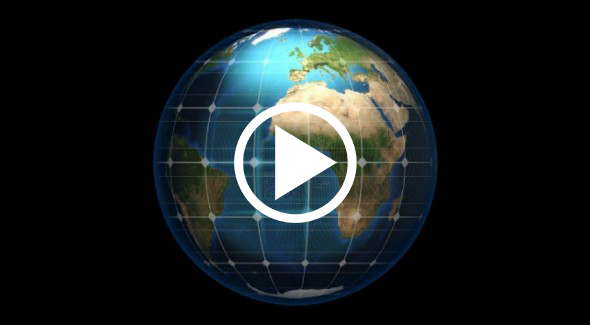The truth is, the big planets are all spherical while meteorites have different shapes, but our Earth is not completely spherical.
The Earth was believed to be a flat surface a long time ago, before science and astronomy proved otherwise. Astronomers such as Pythagoras believed that the Earth was not flat thanks to star observations, and even Eratosthenes roughly calculated the circumference of the Earth in the 2nd century BC. It wasn’t until Columbus crossed the Atlantic Ocean and discovered the Americas that people fully believed that the Earth was spherical. In 1967, the TIROS-1 satellite returned the first images of the Earth taken from space and confirmed that the Earth was spherical.
But why are the Earth and all the planets and stars in the universe round and not square or any other shape? The answer is simple, because they are planets. Many of you might be surprised, but take it easy so I can explain. In an effort to distinguish large planets from asteroids (or smaller asteroids), they found that the deciding factor in the difference was the planets. Larger asteroids can keep a sphere while smaller mass asteroids cannot.
Gravity is related to this mass, which can be considered the main reason that large stars and planets are spherical. The enormous masses of these planets create a gravitational pull, theoretically centered on their nuclei. Newly formed planets may not have a definite shape, but it is gravity that pulls matter from all directions towards its center. This is why, after millions and billions of years, these planets have a fixed form of spheres.
Many of you will think that rocks on other planets as well as on Earth are very hard, so how can it be warped into a sphere as we knead dough and bake cakes. Yes, it is true that the layers of matter on the planets are very hard, but compared to the gravity of a planet, it is nothing. Especially in the center of the planets, the temperature is often very high, enough to heat all the matter, then gravity will do the kneading job easily, creating spherical planets.
However, you can easily see that the surface of the Earth and the planets is not completely flat like a smooth drift cake, there are high elevations like hills and there are a lot of deep depressions like the ocean floor. The reason is that in the process of gravity acting on the layers of material, it pulls the rock layers towards the center and creates geological tectonics which makes the surface uneven. In addition, with the outermost layers of matter, at the surface, the gravitational force has been significantly reduced compared to the lower layers. In addition, the surface temperature is also significantly reduced, so that the rock layers remain in a solid state and are less easily deformed by gravity.
In fact, parts of the Himalayas rise due to forces from below, but other parts of the mountain range crumble due to gravity. Earth’s gravity also prevents natural mountain ranges from getting too high by exerting a force in the opposite direction.
Also, there is a fact that not everyone knows is that the Earth is not a perfect sphere. If you calculate the distance from the center to sea level, the distance from the center of the Earth to the equator is 20 km greater than the distance to the poles. Its cause is that the Earth rotates around it with an axis connecting the two poles, so it exerts a centrifugal force against gravity. This centrifugal force is maximum at the equator. For planets made of lighter, faster rotating materials like Saturn and Jupiter, we can quite clearly see the bulge at the equator.
Unlike large planets and stars, asteroids and meteorites are not spherical, but have very different and unstable shapes. This is partly because their mass is very small, so gravity is also very low and its impact is not enough to deform the layers of matter. In addition, the planets took their shape early in their formation, when it was still very hot and matter seemed to have melted. While asteroids are fragments of collisions, their layers are stable and shaped.


